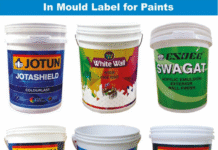Century Pulp & Paper (CPP), a BK Birla Group company, has been focusing on sustainable manufacturing and has invested Rs 120 crore in its effluent treatment plant at its manufacturing unit in Uttarakhand. The company is a leading producer of writing and printing paper, tissue and paperboard, as well as Rayon Grade Pulp (RGP) products.
“A few years ago we faced some issues with the authorities and that is when we realized that if we have to be in business for the long haul, we will have to focus on sustainability in terms of solid and water waste management as well as wood procurement,” says Sunesh Yadav, general manager – Sales (Board), Century Pulp & Paper during the recently concluded Innopack Pharma Confex 2019 that was held in Mumbai.
The company has managed to improve the efficiency of primary clarifier through effective removal of suspended solids by installation of Bellmer screw press from Germany. Due to this, primary sludge dryness increased from 2% to 55-60% and this sludge is used for suitable board grade.
Century has also installed diffusers aeration system in activated sludge process (ASP) to increase DO level and to maintain required Bio-mass for the reduction of COD/BOD in treated waste water. Other than this, Century has invested on MBBR process and chemical treatment after diffusers based activated sludge process to further reduce the color of the treated water along with COD/BOD. Significant reduction in COD/BOD and color of waste water measured after tertiary clarifier, says Yadav.
The company has also managed to reduce water consumption by 40% through various water conservation scheme based on 3R principle i.e. reduce, reuse and recycle of waste water.
Robust growth in demand for paper in the packaging sector
For Century Pulp & Paper, the packaging segment is an important business area. Out of its total output of 38,000 tons per month, about 40% production is of paperboard and 50% of the total paperboard output goes into packaging applications.
“The packaging sector today cannot be ignored as the growth rate is very robust. Demand for mono cartons in pharma applications as well as demand for paper boxes and cartons in the food segment is very robust. Also, the demand for items like paper cups is also coming up fast. However, the growth of VAP grades in the food packaging segment is higher than in the pharma sector,” Yadav says.
According to him, with ban on single use plastic packaging, food brands are increasingly opting for paper boxes and similar packaging solutions. “With rising income and busy lifestyles, young people are ordering food from outside frequently and with the arrival of applications like Swiggy and Zomato, there will be further growth for paper packaging solutions in the food sector,” he argues.
Challenges
Although demand for paper-based packaging is growing in India, there are still some significant challenges. Paper and paper board manufacturers are dependent on the imported pulp for certain types of grades. This exposes them to a lot of uncertainties due to dependency on imported pulp prices.
“Since for some grades we need to depend on imports, we have to get exposed to a lot of price fluctuation like it happened in the last year. This creates uncertainty in one of the major raw material components and that is a big challenge. I think at this moment we will have to live with this as there are no alternatives at this point of time,” he says.
Availability of pulp able wood is also becoming a challenge due to the demand of wood from other industry like laminates (plywood).
“The company is putting a lot of effort in this area to ensure a consistent supply of wood on a long term basis and encouraging local farmers for wood plantation by ensuring minimum support price (MSP) to farmers at par with other crops so that farmers increase plantations,” Yadav concludes.












want to import A4 copier paper from india
discussion with bindal & century paper.
have decided to import from india
please advice me sincerely,
my partner is agaisnt importation fr india as he has read the quality not as good as AA & IK Paper.
pls advice
Over the years customers in various parts of the world who have imported copier papers from India tell us that the quality fits their needs. – Editor